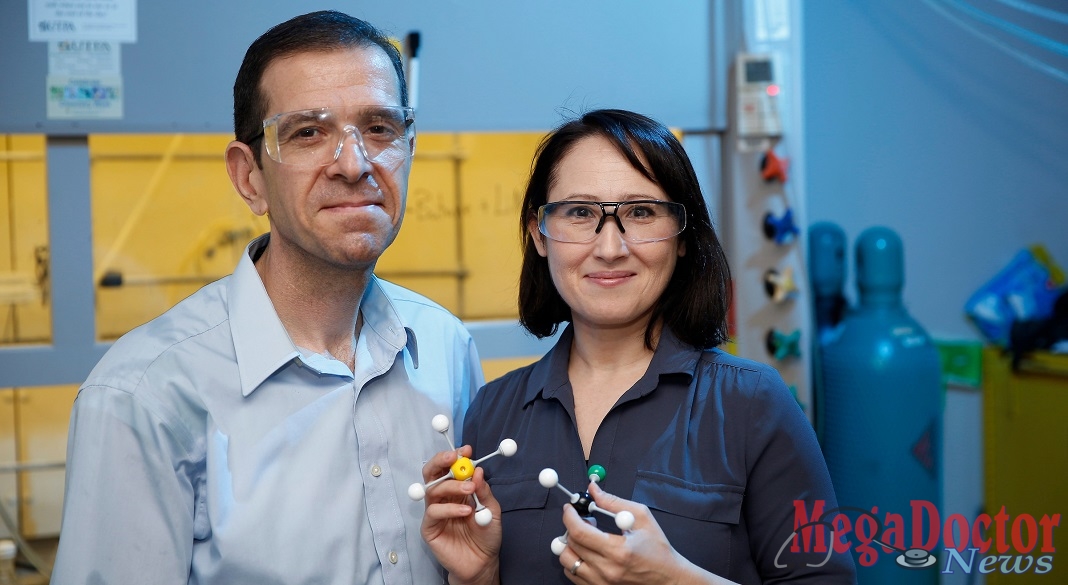
UTRGV Photo by Paul Chouy
Mega Doctor News
By Aaron Dubrow
Sometimes, when experimental scientists get their hands on a supercomputer, it can change the course of their research and open up new questions for exploration.
That was the case with Drs. Abdurrahman and Tulay Atesin, husband and wife chemists, collaborators and professors at The University of Texas Rio Grande Valley.
Experimentalists by training, they moved to Texas in 2013 and learned from a colleague that, through The University of Texas Research Cyberinfrastructure initiative, they had free access to some of the advanced computing systems in the world at the Texas Advanced Computing Center (TACC).
“We weren’t planning on doing intensive computational studies, but once we were introduced to resources at TACC, it opened our research horizons to collaborate with other groups within UT system and other parts of the country,” Tulay Atesin said. “It has been extremely helpful for both of our research groups and our research productivity. Having TACC resources helped us a great amount in continuing our research.”
For the past five years, the Atesins have used TACC supercomputers – initially Longhorn, Lonestar, and Stampede, then Lonestar5 and now Stampede2 – to study organometallic compounds: chemical compounds that contain bonds between a carbon atom of an organic molecule and a metal.
Organometallic compounds are widely used in industrial applications and serve as catalysts for the production of polymers, pharmaceuticals, and many other types of practical products. However, it isn’t the end products that interest the Atesins as much as the process that molecules go through to get there.
The Science
Their most recent research deals with the element, palladium, and its role in synthesizing cyclopentenones – five-membered rings which play a role in diverse compounds like the scent of jasmine and prostaglandins, a lipid that has hormone-like effects in animals.
This week, the Atesins, working with UTRGV collaborators Oscar Rodriguez, Diego Rivera, and Lohany Garcia, published the results of a study in Computational and Theoretical Chemistry, exploring the structure of a palladium catalyst in order to understand the exceptional selectivity observed in palladium-catalyzed reactions.
“The research can be used to guide the synthesis of new and improved variants of this important catalyst family,” Tulay Atesin said.
In separate research reported in Organometallics in September 2017, they explained the mechanism of a reaction that many thought was a “Nazarov” reaction since the reactants and the products of the reaction are the same as a classical “Nazarov” reaction.
“Everyone in the field thought that palladium(0) does not function as a Lewis acid, but its role was not clear,” Tulay Atesin said. In 2012, when the reaction was first reported, “the mechanism was unknown. So, we studied what the mechanism could be.”
Mechanistic studies using TACC resources give the Atesins a competitive edge in their work, she said. “It takes our research to a higher level than just working on experimental research. It also impacts how we design our next set of experiments.”
Teaching Critical Thinking Through Computation
While the Atesins are proud of their research progress, they say they are equally fulfilled by their role as teachers at UTRGV.
“Understanding the mechanisms of chemical reactions is very difficult, but it’s important for our students to learn in order for them to be critical thinkers, and not just doers,” Tulay Atesin said.
Students, including high school students participating in summer programs, have the opportunity to interpret the Atesins’ computational studies and learn how advanced computing can be applied to chemistry.
“They’re getting the opportunity to expand their critical thinking skills with state-of-the-art computational resources,” she said. “It challenges them, and the way that they think changes. I enjoy seeing their growth.”










